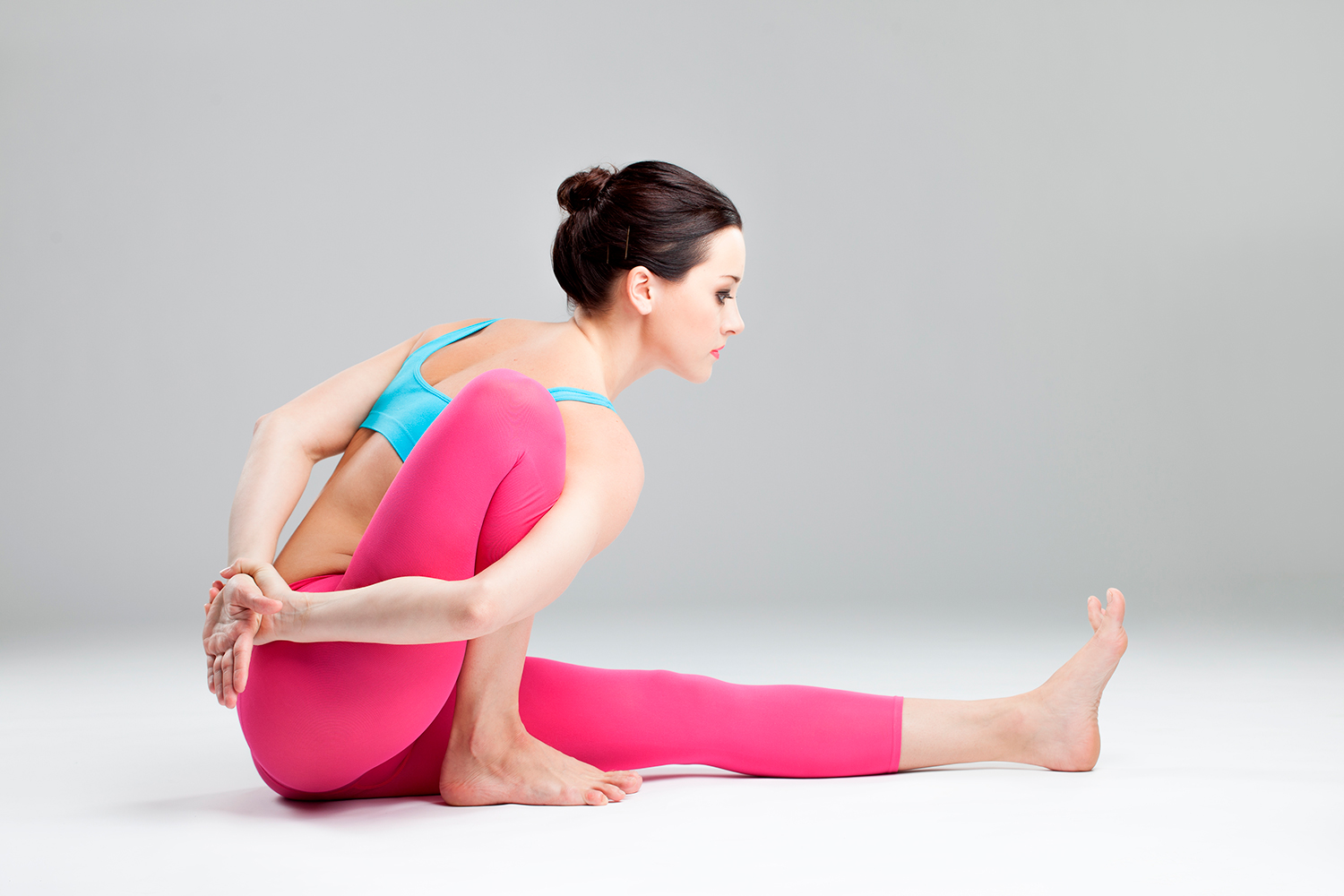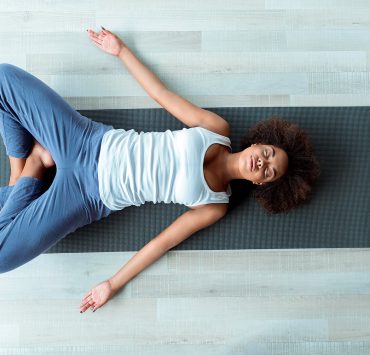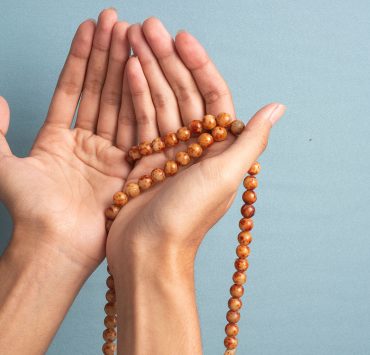
Paving the way for yogic living in Nebraska, Jacqueline Roberts…
Yoga is a household word these days, but do you really know what yoga is? There are so many different styles and stereotypes about yoga and yogis in our modern lives that the true meaning and practice of yoga has become skewed.
For the beginner, diving into yoga can be an intimidating process with the huge expansion of this practice over the decades. If you are hoping to start your yoga journey, or perhaps deepening your current yoga practice, it can be helpful to get back to basics. Let’s look into the core of what yoga is to help us truly understand this amazing practice.
History of Yoga

While yoga has become quite popular in the West over the past few decades, it actually originated over 3,000 years ago. Yoga was developed for the ascetic and śramaṇa movements and was used as a meditation and health cultivating technique.
One book helped to spread the teachings of yoga: the Yoga Sutra. This book outlined the traditions and teachings of yoga (most of which were only transmitted orally at the time). Now, in addition to the apprenticeship style of yoga, people could read and learn about the asanas, theories, and lifestyle practices. Today, the Yoga Sutra is still studied and read by yoga students.
Yoga eventually made it’s way out of India and into the West. During the 1980s, famous teachers like B.K.S. Iyengar and Yogi Bhajan brought the practice to Europe and the Americas. This form of exerice, mediation, and mental evolution began to gain popularity and different styles and methods emerged. These days, most people in the US have either tried or know someone who practices yoga regularly. Yoga has transformed from an esoteric lifestyle and health cultivation practice to a modern phenomenon in cities all over the world.
What are the Basic Ideas of Yoga?

At it’s core, yoga is a form of movement meditation. It is both a physical and mental exercise in grace, peace, and intention.
Movement
Yoga is the practice of specific movements and poses called asanas. Asana is a Sanskrit word that translates to “posture.” Depending on the style of yoga, you may move through these poses quickly as in dance, or hold them for several breath cycles or minutes. The goal in each pose is to allow the body to come into balance, strength, and engaged relaxation in each posture. This requires practice, focused breathing, flexibility, and a clear mind.
Breathwork
Another major aspect of yoga is the breath. We breathe all day long without truly considering what we are doing. Our bodies take over and we breathe mindlessly through our daily tasks. Yoga asks us to stop and pay great attention to the amazing breath.
Breathing exercises in yoga are called pranayama and are just as big a part of yoga as the asanas. “Prana” translates as life-force of breath, and “ayama” as extension or to draw-out. When combined, this term means control and extension of the breath. There are several different types of pranayama and various exercises for different goals. During a yoga practice, however, the breath is always considered as part of the movement. Inhalation must match certain movements, as well as exhalation. Your yoga teacher will help you learn this flow but eventually you will pick up on the proper way to regulate your breath during yoga.
Meditation
Meditation, or dyana, is integral to a yoga practice. While you may benefit physically from a yoga sequence, the most benefit is seen when yoga is practiced as a meditation itself. Many yogis also choose to take on a separate, still meditation practice in their daily lives to enhance their mental and emotional capacities.
Spirituality of Yoga

Many of us think of yoga as a workout, an exercise regimen first and a spiritual path second. Some practitioners of yoga take a completely anatomical and physical approach, while others may be inherently focused on the deeper meaning and soul of yoga. Whichever camp you fit into, it is important to understand the underlying spiritual origins of yoga to fully appreciate and respect the practice.
Yoga’s roots are in the Hindu tradition with some religious aspects in the early developments. One of the most well-known spiritual aspects of yoga is that of the Eight-Fold Path. This is a set of lifestyle guidelines created to help yogis follow a life full of peace and meaning. Along with the physical practice of yoga, the Eight-Fold Path offers guidance on practicing non-violence, cleanliness, non-stealing, concentration, breathwork, and interconnectedness, among other determined traits of a well-lived existence.
You do not have to subscribe to these teachings to practice yoga, but many find that these ideas resonate with living a life of purpose and love. There does not have to be a religious aspect to your yoga practice, but you may also find that as you practice yoga, you become more interested in developing a spiritual practice.
Styles of Yoga

There are so many different styles of yoga, you are bound to find one that suits your lifestyle and physical health goals. Here is a study in some of the most common styles you may find.
Hatha
Hatha yoga is a relatively wide-spread term applied to yoga. It involves any type of yoga that teaches the physical postures, or asanas. This includes nearly any type of yoga you will encounter in a class. It can also be an indication that a class is a foundational introduction to the basic postures of yoga.
Ashtanga
Ashtanga yoga focuses on ancient teachings of yoga. It can be more rigorous than Hatha styles, with a strong correlation of movement to breath. Ashtanga yoga follows a specific set of postures, all in the same order, for every practice.
Vinyasa
Vinyasa is a widely popular form of yoga known for its flow from one posture to the next. The style takes on a fluid, nearly dance-like form and is highly focused on the transitions between postures. Breath and intention are major components of a vinyasa class. This style differs from Ashtanga in that no two classes will be the same. Different postures and sequences are used to make every vinyasa class unique.
Bikram
Bikram, like Ashtanga, always follows a specific set of poses in a certain order. This style takes on a special 26 poses in a heated room to induce sweating and flexibility.
Kundalini
Kundalini translates to “coiled snake” from Sanskrit, as early religion believed that divine energy was created and housed at the base of the spine. This type of yoga helps to uncoil this snake (and the energy) to connect us to truth and power of the divine. Many of the postures involve stimulating the spine, dedicated breathwork, and chanting.
Iyengar
Iyengar is a relatively new form of yoga, developed by B.K.S. Iyengar. This is an anatomically-specific practice with a great deal of attention devoted to alignment and position. This type of class makes use of props like blocks, straps, blankets, and bolsters to make sure students are achieving the best, most accurate form for their bodies. This is a great choice for those who suffer from injuries due to its strong attention to detail.
Yin
Yin, or restorative, yoga is a slightly less-moving practice that focuses on muscle relaxation and deep release. This form also makes good use of props to achieve different levels of release throughout the body. Many of the poses are held for longer times than you would in a typical class.
Yoga Nidra
Unlike the other forms of yoga discussed here, yoga nidra is a fully meditative practice. During yoga nidra, the body is fully relaxed (often laying on the floor) and you are lead through awareness exercises to help connect to your inner world. During this practice, you are encouraged to withdraw slightly from the five senses to reflect internally. This provides a meditative consciousness called samadhi.
How to Get Started with Yoga

Yoga is for everyone – any age, shape, or background can take on this amazing mental and physical practice. If you are new to yoga you may be intimidated or confused on how to start.
The first step is to sign up for a class in your local area. While watching videos online is an excellent way to learn the basics and continue a home-based practice, having the help and guidance of a teacher can make sure you develop the best and safest foundation to move forward.
Your basic needs are some comfortable, breathable clothes such as yoga pants, shorts, and a close-fitting tee or tank. You’ll want to avoid clothes that are too baggy as they may impede some of the poses. You should be able to have free range of motion in your clothes. You will also need a yoga mat. Additional helpful tools include a towel (to catch sweat), water bottle, yoga blocks, and a strap. Many yoga studios carry these props for use in class, so don’t worry about investing in your own right away.
The last thing you will need to do before starting your yoga journey is to prepare your body and mind. Practicing gentle stretching is the perfect way to get your body used to movement if you have been stationary for a while. You will learn everything you need to know in class, so don’t worry about knowing anything about yoga before jumping in.
You may also want to set an intention for your yoga practice. Do you hope to become healthier? More connected to your body? To calm your mind so you can be your best self? The possibilities are endless and specific to each one of us, but setting your intention right off the bat can make a huge difference in your ability to connect to your practice and to stay motivated to keep with it during tough times.
Experience is the Best Teacher

Hopefully you are a little more familiar with the basics and background of yoga now. However, the best way to truly understand something is to get your feet wet – get out there and try yoga! If you are a seasoned yogi, perhaps jump into a different style of class than your usual or pick up one of the classic texts to dive deeper into the spiritual aspect of the practice. Each session will teach you something new about yourself and about the world. Open up, be flexible, and practice peace.
What's Your Reaction?
Paving the way for yogic living in Nebraska, Jacqueline Roberts is adored by her students as a constant source of support and inspiration. A knack for writing allows her to share what she has learned with the world.














